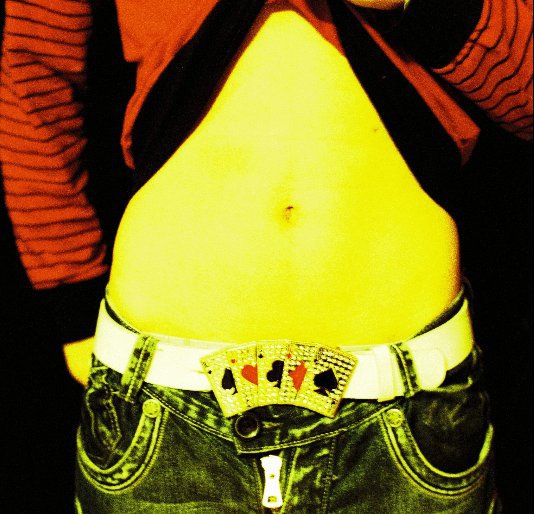Mother Michael Goes to Heaven
von Lilla Szász
Dies ist der Preis, den Ihre Kunden sehen. Listenpreis bearbeiten
Dieses Buch kann bei Amazon gekauft werden.
Über das Buch
Lilla Szász
Mother Michael Goes To Heaven
Texts by Lilla Szász (English)
Design by Lilla Szász
2010, Hardcover, image wrap
18x18 cm, 98 pages
31 colour plates
Published by: Lilla Szász
Lilla Szász, 1977
Lives and works in Budapest
In Mother Michael Goes To Heaven Lilla Szász’s initial motivation was to document one family’s struggle, living with sex work, poverty and unrequited love.
She met Michael, Monica and Alexander while photographing sex workers in the Józsefváros neighborhood of Budapest. They were the only with whom she became friends; over time very close friends. She photographed them for approximately 3 years, from the time they moved to the flat in the 9th district of Budapest, on Kálvária Square. The flat where they were living was very important to this series. They received their clients and lived their lives here; the two boys (Alexander and Michael) met in this flat, and it is the place where Michael committed suicide on 24 February, 2010.
Michael’s death was not because of or linked to prostitution. He loved Alexander. He loved him and wished to live happily with him. Unfortunately Alexander – the boy, who lived a majority of his life in an orphanage and as a gay prostitute – has never been capable of love, never knew intimacy.
The life of Monica and her family is unusual but the problem that finally led to Michael’s death is. The question she has asked after his death is: “could it happen to anybody?” And she realised that similar situations were and have been in her private and in her friends’ lives as well.
Mother Michael Goes To Heaven
Texts by Lilla Szász (English)
Design by Lilla Szász
2010, Hardcover, image wrap
18x18 cm, 98 pages
31 colour plates
Published by: Lilla Szász
Lilla Szász, 1977
Lives and works in Budapest
In Mother Michael Goes To Heaven Lilla Szász’s initial motivation was to document one family’s struggle, living with sex work, poverty and unrequited love.
She met Michael, Monica and Alexander while photographing sex workers in the Józsefváros neighborhood of Budapest. They were the only with whom she became friends; over time very close friends. She photographed them for approximately 3 years, from the time they moved to the flat in the 9th district of Budapest, on Kálvária Square. The flat where they were living was very important to this series. They received their clients and lived their lives here; the two boys (Alexander and Michael) met in this flat, and it is the place where Michael committed suicide on 24 February, 2010.
Michael’s death was not because of or linked to prostitution. He loved Alexander. He loved him and wished to live happily with him. Unfortunately Alexander – the boy, who lived a majority of his life in an orphanage and as a gay prostitute – has never been capable of love, never knew intimacy.
The life of Monica and her family is unusual but the problem that finally led to Michael’s death is. The question she has asked after his death is: “could it happen to anybody?” And she realised that similar situations were and have been in her private and in her friends’ lives as well.
Autorenwebsite
Eigenschaften und Details
- Hauptkategorie: Kunstfotografie
- Weitere Kategorien Kunst & Fotografie
-
Projektoption: Quadratisch klein, 18×18 cm
Seitenanzahl: 98 -
ISBN
- Bedrucktes Hardcover: 9798211326880
- Veröffentlichungsdatum: Apr. 27, 2011
- Sprache English
- Schlüsselwörter sexworkers; love; family;, addiction
Mehr anzeigen
Über den Autor
Lilla Szász
Budapest, Hungary
Lilla Szász was born 1977 in Budapest, lives and works in Lisbon and Budapest. Her sensitive, diary-like series of photos explores social taboos and different forms of otherness. Her works portray human vulnerability and give an insight into the lives of marginalized social groups, prostitutes, young criminals living in institutions, or even an HIV-positive elderly woman. Her projects have been exhibited at the Photo España in Madrid, the National Gallery in Warsaw and the Fotohof in Salzburg, among others. In 2018 and 2019, she conducted researches in Lisbon, at Hangar Artist Residency, and New York as a Fellow of the Asylum Arts Grant.


